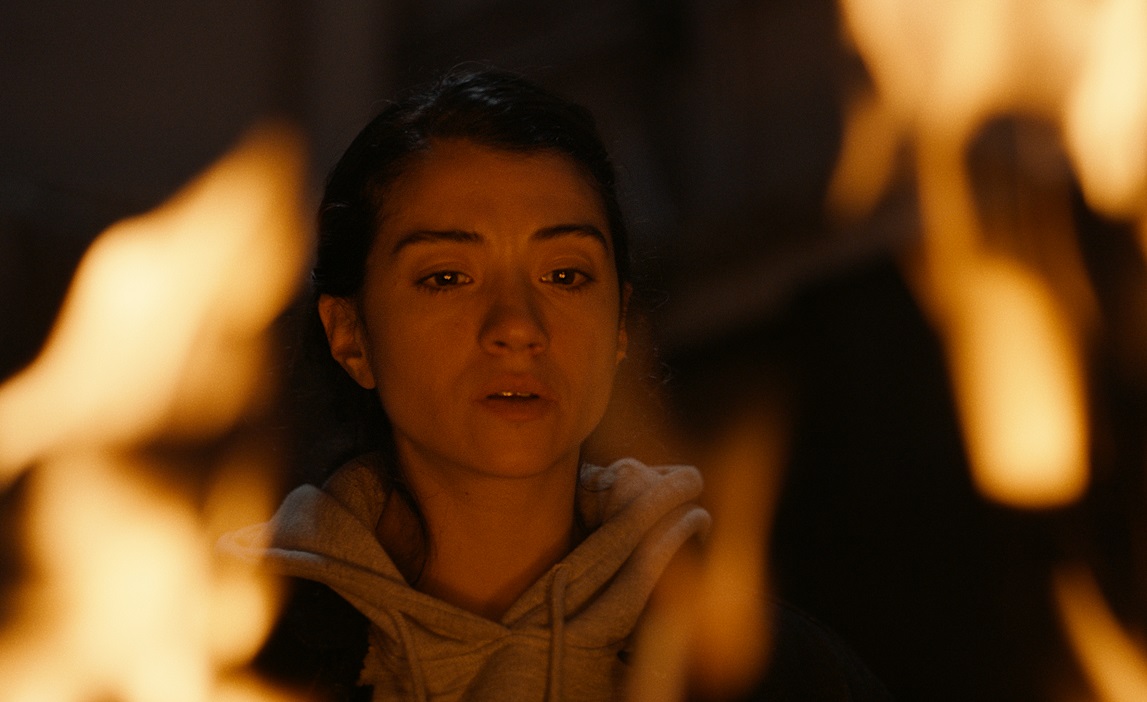Ashkal takes an audaciously hybrid approach to genre: it’s part-noir, part-supernatural thriller, and full political allegory. The investigation at the center of this slow-burn Tunisian police procedural is a gripping one, as burnt naked bodies keep turning up in abandoned construction sites in Tunis with no trace of a struggle or even a combustible on them. In post-revolution Tunisia, the deaths are an uncomfortable reminder of recent history: it was a young Tunisian man’s self-immolation that sparked the Arab Spring, after all.
The revolution’s complicated legacy looms over the film, as we watch the country’s Truth and Dignity Commission begin its work of uncovering the former government’s corruption and abuses. Ashkal’s two protagonists — the young Fatma (Fatma Oussaifi) and her more seasoned police partner Batal (Mohamed Grayaa) — find themselves on opposite sides of that political divide, he having been implicated in the abuses of power that are now being investigated by Fatma’s father. There are fascinating elements at play here, and the results of Ashkal’s ambitious genre experiment are mostly inspired. Much of the film’s energies are spent on building a paranoid atmosphere — efforts that can, at times, frustratingly slacken the tension — but its fantastical touches tauten things up enough to make it a haunting political commentary in the end.
Synopsis
Set amongst derelict, half-finished apartment complexes of a former regime, the discovery of a mysterious burnt body by two police officers reveals a puzzling repetition of events. As the investigation progresses, a network of violence and corruption is uncovered throughout the city.
Storyline
Two police officers struggle to solve a series of inexplicable immolations amidst a fraught moment of political reckoning for Tunisia.
TLDR
The “ash” in “Ashkal” probably isn’t an intentional play on the movie’s fiery themes, but it works all the same.
What stands out
Ashkal opens — and is largely set in — the “Gardens of Carthage”, an imposing concrete wasteland originally intended as a playground for the dignitaries of the pre-revolution Tunisian government. Those plans were abandoned with the dawn of the Arab Spring, making the neighborhood an eerie relic of the former regime. Ashkal’s cinematography deepens the metaphor by giving the derelict construction sites a voyeuristic perspective of their own, so that they almost feel like a character themselves. It’s a brilliant use of architecture as monster, one that speaks to Ashkal’s inventiveness and ambition.




